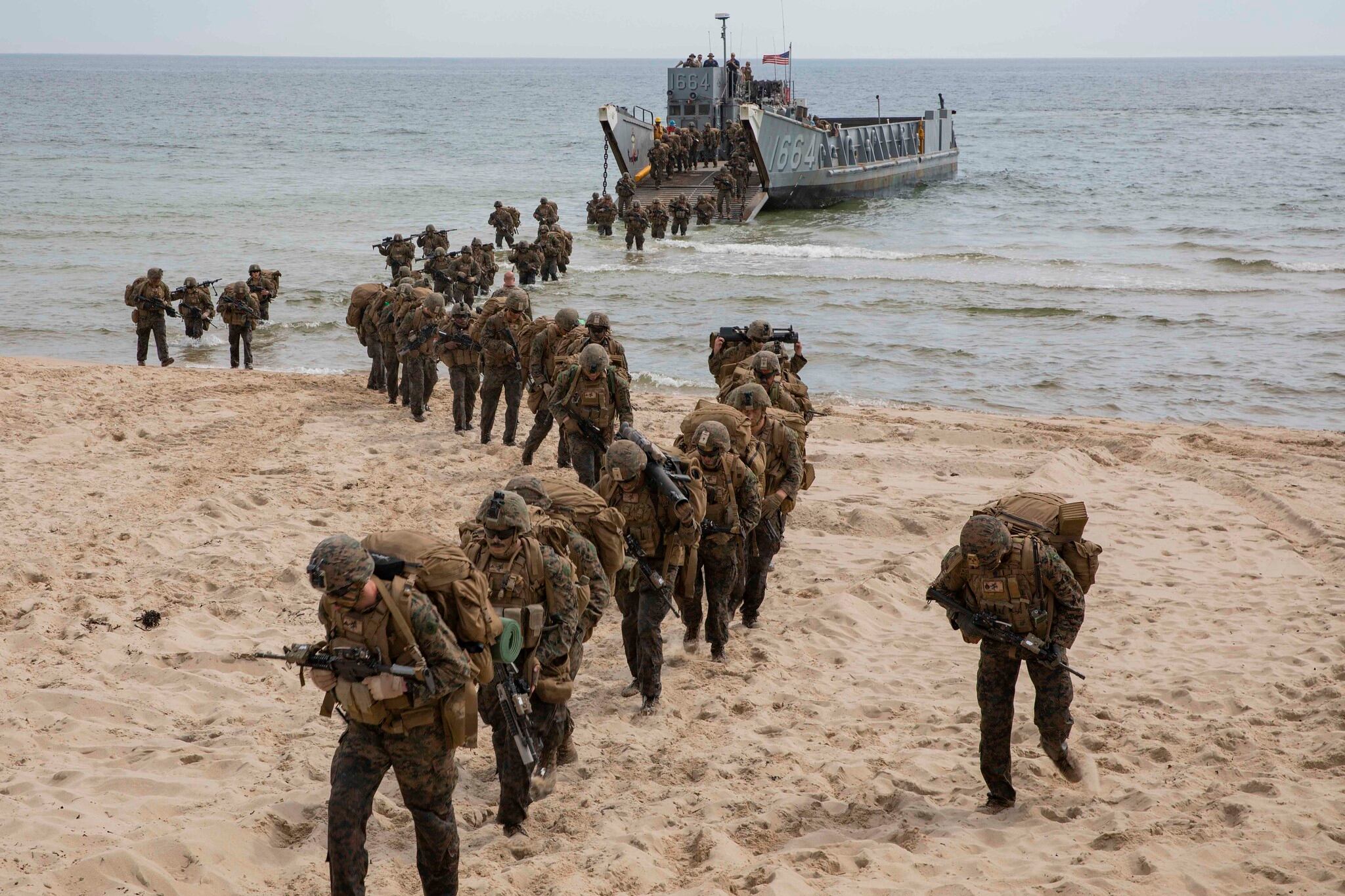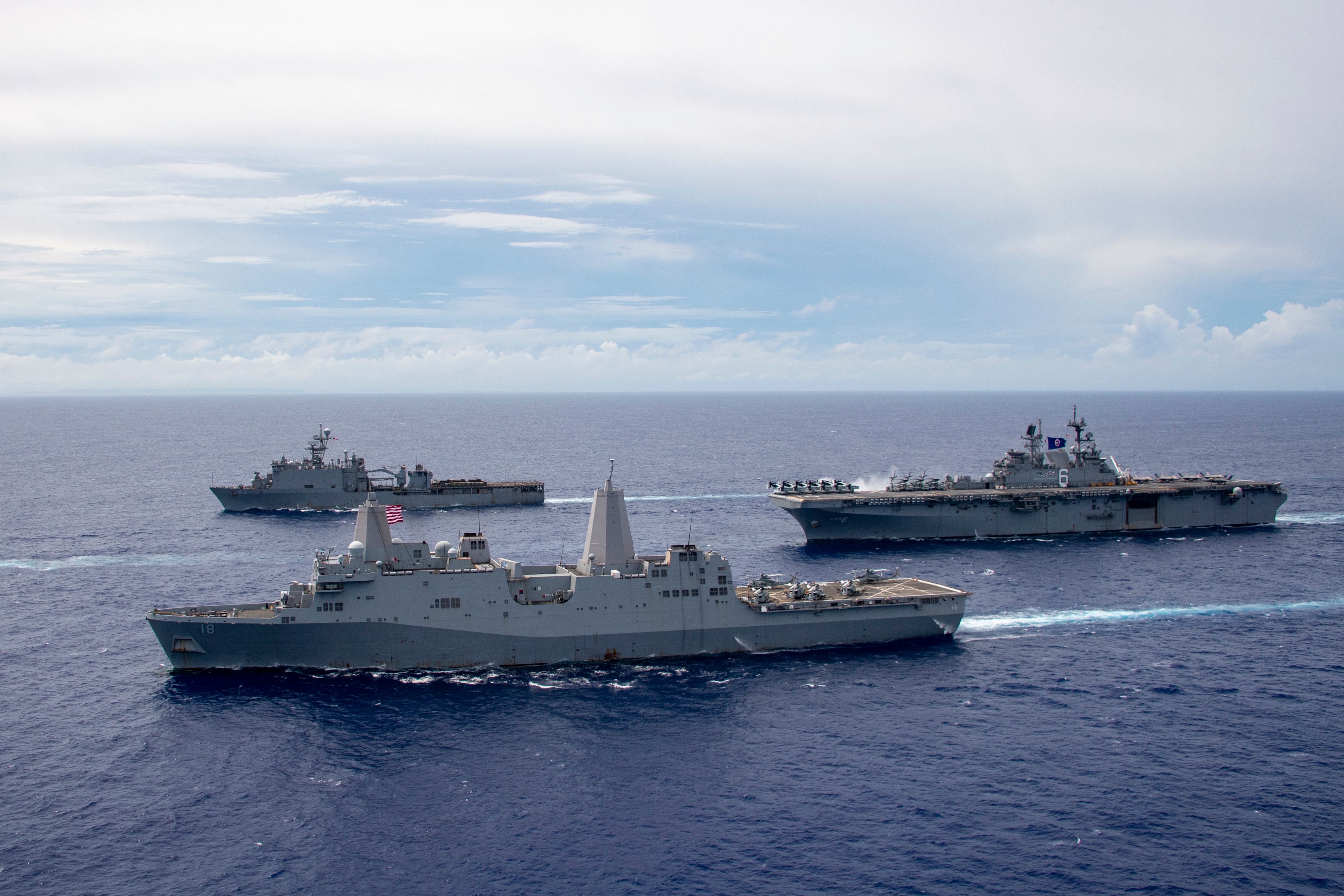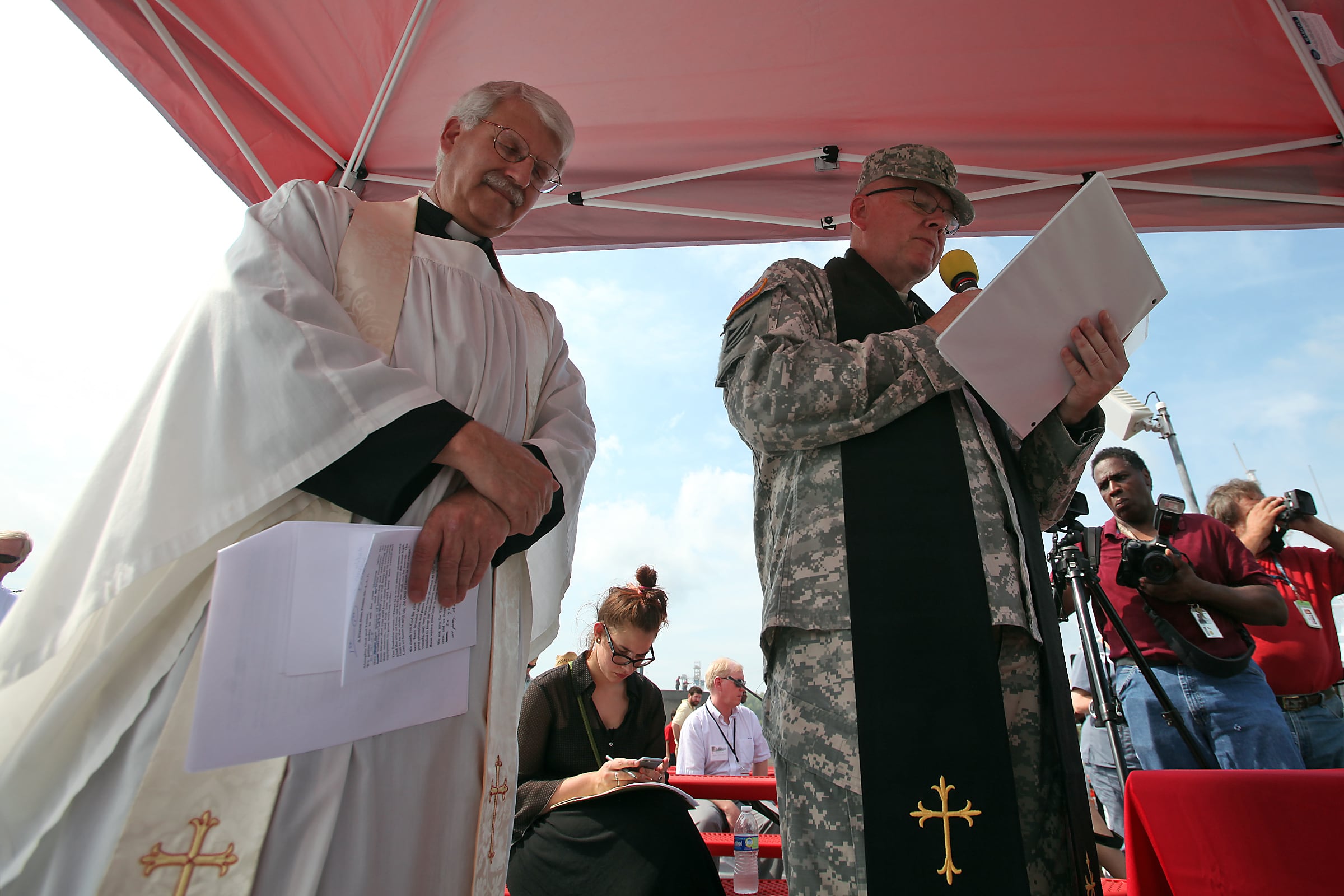The Marines want more of the ships they’ve got and more ships yet to be designed, all in an effort to stay in the maritime fight.
Top Marine leaders, from Commandant Gen. David Berger to his director of naval expeditionary warfare, Brig. Gen. David Odom, recently pushed the ship needs of the Corps.
Speaking on separate days at the annual National Defense Industrial Association’s annual Expeditionary Warfare Conference, Berger and Odom both championed the America-class amphibious assault ship of the landing helicopter assault type, along with the still-underdevelopment complementary cousin, the light amphibious warship, or LAW.
RELATED

The America-class ship has been in service since 2014 and gives Marines a vertical lift platform at range in various areas.
Odom praised the LHA’s versatility, calling it “two anchor points of sovereign U.S. territory” during his remarks in on Thursday NDIA panel.
The expeditionary warfare director noted the progress of the Tripoli, slated for service later in 2022, and the Bougainville, under construction and featuring a needed well deck expected to launch in 2023 and delivered for service by 2025.
The Navy plans to buy between 24 and 35 LAWs, the first purchase in 2023, according to budget documents.
The anticipated cost runs $100 million to $150 million each for the LAW, a Congressional Research Service report noted.
The LAW is a much smaller ship that should carry up to 75 Marines and be able to conduct a beach offload.
The ship, still under design, will be between 200 feet and 400 feet long, weigh between 3,000 tons and 4,000 tons and carry up to 10,000 square feet of cargo, said Navy Capt. Scott Searles, program manager for PMS 317. That program monitors amphibious assault and connectors for the service.
Five companies under Pentagon contracts in the LAW program recently got the new options for the preliminary design phase, reported U.S. Naval Institute.
Those are Fincantieri, Austal USA, VT Halter Marine, Bollinger and TAI Engineers.
A small flotilla could deliver the Corps’ newest unit to combat: the Marine littoral regiment. The littoral regiments are expected to be the center of force projection on the manpower side, working in major combat operations but spread out, alongside the Marine expeditionary units already in theater.
The light amphibious warship program has had its critics in recent years. The pitch was rolled out in detail in 2019 as the Corps’ answer to staying mobile and maritime relevant while not taking away major funding for big Navy priorities.
But the Marines continue to push.
“We’re leaning in hard on the light amphibious warship,” Odom said.
Both Berger and Odom called the two ships complementary to each other in the service’s anticipated way of warfare, which will include expeditionary advanced base operations ― small groups of disparate Marines, perhaps a company, platoon or even squad, running interference, launching long-range fires and harassing adversaries’ flanks to open options to Navy ships.
Though U.S. shipbuilding has struggled in recent decades with shifting priorities and budget constraints, Berger emphasized in his Tuesday talk at the NDIA event that building both ships at the same time isn’t only possible, but necessary.
“It’s the tactical mobility to move a smaller element organically that fits this stand-in force approach that we’re taking,” he said.
The team of the two types of ships allows for deterrence and denial from crisis response to humanitarian assistance and disaster relief, along with combat missions, he said.
“They are not a substitute for each other because a traditional amphibious ship has all the attributes that we know and love so much over the years that a Marine expeditionary unit and amphibious ready group have been using,” he said.
Todd South has written about crime, courts, government and the military for multiple publications since 2004 and was named a 2014 Pulitzer finalist for a co-written project on witness intimidation. Todd is a Marine veteran of the Iraq War.





